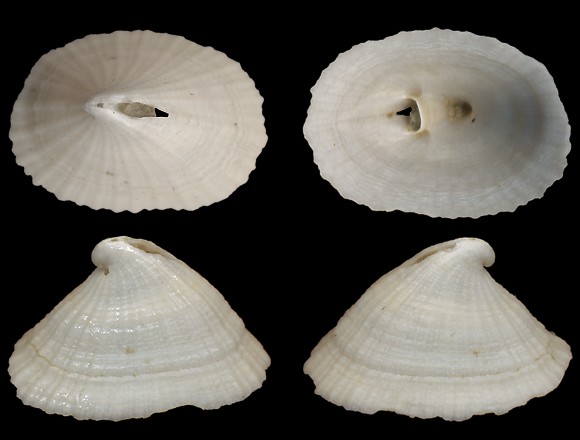
Original taxon: Patella noachina.
Dredged at 250m deep, Golfo Stella, Elba island, Tuscan archipelago, Toscana, Italy. 7,5mm.
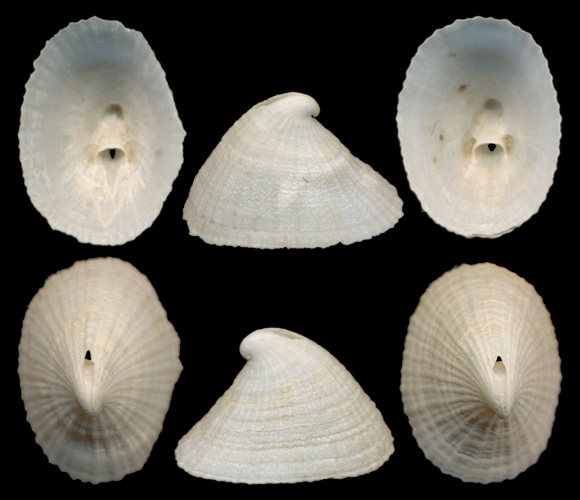
Specimens from NE. Atlantic.
800m deep, Porcupine Bank, 120mi W. of SW. Ireland. 9mm.
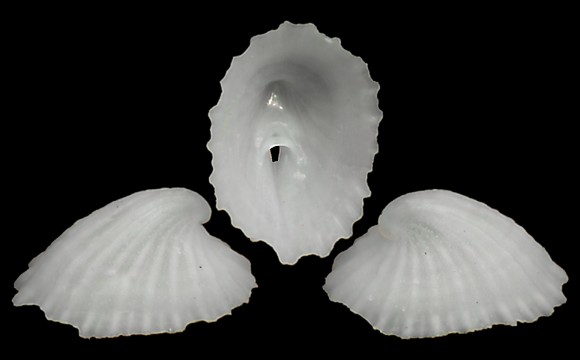
Dredged at 20m deep, Dalnezelenetskaya harbour, Kola peninsula, Murmansk Oblast, NW. Russia. 4,5mm.
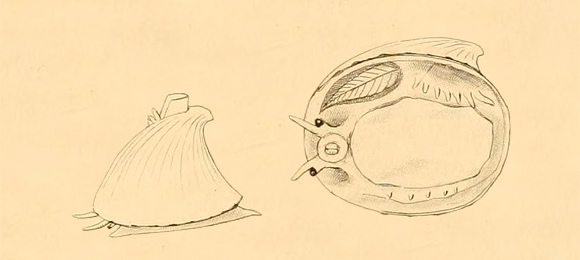
« This very curious shell was first observed as a fossil by Linnaeus himself, in the pleistocene beds of Sweden. Not until of late years has it been taken alive, and British cabinets were for a long time supplied with specimens from the pleistocene beds of the Clyde. Mr. Smith, of Jordan Hill, was the first to maintain its existence in the living state in the British seas. […] It is a species essentially of northern origin, and has now its chief habitat in arctic and boreal seas, extending along the coast of Greenland, and down those of Boreal America to Cape Cod. It dates its origin from the pleistocene epoch, and can only be regarded as a lingerer in our existing seas. » – Forbes & Hanley: op. cit. vol. II, London 1853, p.475-476.
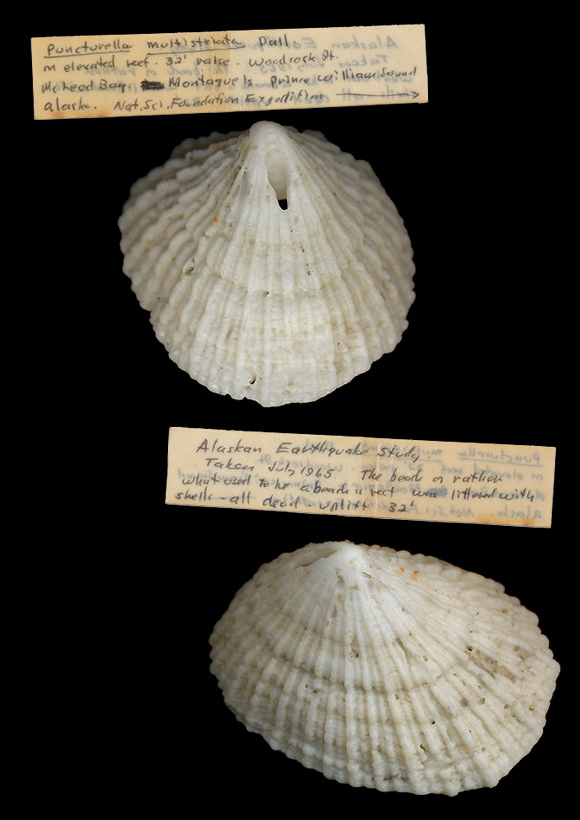
« This genus has the internal vaulted chamber over the foramen, as in Cemoria, and the sculptured surface and median position of the perforation, as in Rimula. » A. Adams: “On some new genera and species of Mollusca from Japan”, Annals and Magazine of Natural History ser.3 vol.5, London 1860, via BHL.
These specimens were killed by the megathrust earthquake that occured on March 27, 1964, near Anchorage, Alaska. They were found on an elevated reef (15m uplift) at Woodrock Point, Mc Leod bay, Montague Island, Prince William Sound, by members of the NSF expedition of July 1965. 37-37mm.
These specimens were killed by the megathrust earthquake that occured on March 27, 1964, near Anchorage, Alaska. They were found on an elevated reef (15m uplift) at Woodrock Point, Mc Leod bay, Montague Island, Prince William Sound, by members of the NSF expedition of July 1965. 37-37mm.